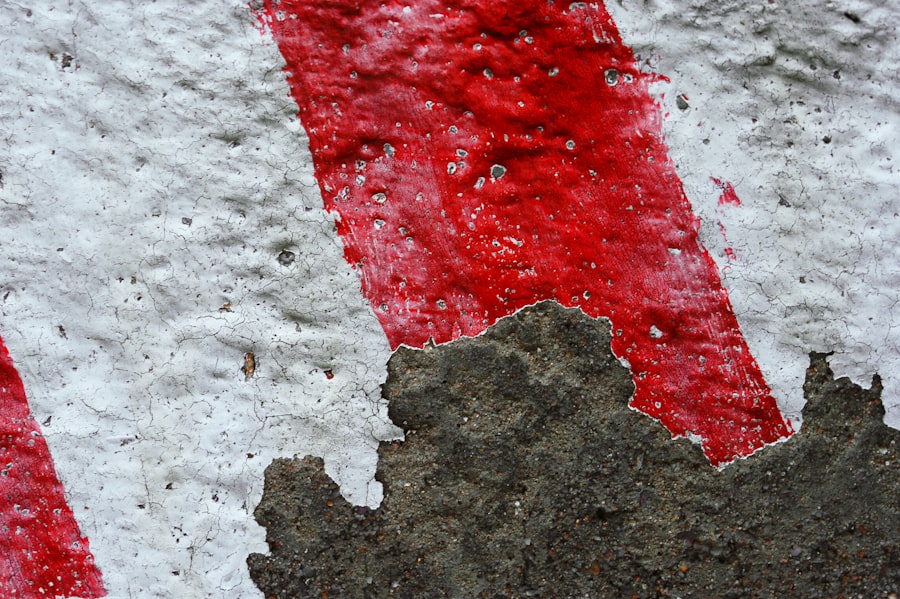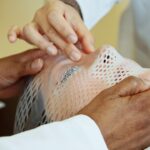As you prepare for the post-laser hair removal phase, it’s essential to understand that your skin has undergone a significant treatment. The laser has targeted hair follicles, and your skin may be sensitive as it begins to heal. Before you leave the clinic, your practitioner will likely provide you with specific aftercare instructions tailored to your skin type and the area treated.
Familiarizing yourself with these guidelines is crucial, as they will help you navigate the initial days following your procedure. In addition to following your practitioner’s advice, you should also consider your lifestyle and how it may affect your recovery. For instance, if you have a busy schedule filled with outdoor activities or social events, it might be wise to plan some downtime.
This will allow your skin to recover without the added stress of sun exposure or potential irritants. Stocking up on gentle skincare products and soothing creams can also be beneficial. By preparing adequately, you set the stage for a smoother recovery process and better results.
Key Takeaways
- Preparing for Post-Laser Hair Removal:
- Shave the treatment area before the session
- Avoid sun exposure and tanning beds
- Inform your technician about any medications or skin conditions
- Immediate Aftercare and Recovery:
- Apply aloe vera or cold compress to soothe the skin
- Avoid hot showers and strenuous exercise for 24-48 hours
- Use gentle, non-irritating skincare products
- Managing Discomfort and Side Effects:
- Use over-the-counter pain relievers if needed
- Keep the treated area clean and moisturized
- Avoid picking or scratching the skin
- Long-Term Hair Reduction Expectations:
- Expect 10-25% reduction in hair growth after each session
- Multiple sessions are usually required for optimal results
- Hair may become finer and lighter over time
- Sun Exposure and Skin Care:
- Use sunscreen with SPF 30 or higher on treated areas
- Avoid sun exposure for at least 2 weeks post-treatment
- Moisturize regularly to keep the skin hydrated
- Follow-Up Treatments and Maintenance:
- Schedule follow-up sessions as recommended by your technician
- Maintain a consistent treatment schedule for best results
- Consider touch-up sessions as needed for long-term hair reduction
- Potential Risks and Complications:
- Possible side effects include redness, swelling, and itching
- Rare risks include burns, scarring, and changes in skin pigmentation
- Follow aftercare instructions to minimize potential complications
- Final Results and Satisfaction:
- Full results may take several months to become apparent
- Most patients experience high satisfaction with long-term hair reduction
- Consult with your technician if you have any concerns about the results
Immediate Aftercare and Recovery
Immediately after your laser hair removal session, your skin may feel warm and slightly swollen, similar to a mild sunburn. It’s important to keep the treated area cool and calm. Applying a cold compress can help alleviate any discomfort and reduce swelling.
You might also want to avoid hot showers, saunas, or intense workouts for at least 24 hours post-treatment, as these can exacerbate irritation. Instead, opt for lukewarm water when cleansing the area and be gentle with your touch. During the first few days of recovery, you may notice some redness or minor bumps on your skin.
This is a normal reaction as your body begins to heal. To promote recovery, keep the area clean and moisturized.
If you experience any unusual symptoms, such as excessive swelling or blistering, don’t hesitate to reach out to your practitioner for guidance.
Managing Discomfort and Side Effects

While most individuals experience only mild discomfort after laser hair removal, it’s essential to have a plan in place for managing any side effects that may arise. Over-the-counter pain relievers like ibuprofen or acetaminophen can be effective in alleviating discomfort. However, always consult with your healthcare provider before taking any medication to ensure it’s appropriate for your situation.
Additionally, applying aloe vera gel or a soothing lotion can provide relief and help keep the skin hydrated. You should also be aware of potential side effects such as redness, swelling, or even slight peeling of the skin. These reactions are typically temporary and should subside within a few days.
To minimize irritation, avoid scratching or picking at the treated area. Instead, focus on keeping it clean and moisturized. If you notice any persistent or severe side effects, such as blistering or signs of infection, contact your practitioner immediately for further evaluation.
Long-Term Hair Reduction Expectations
| Expectation | Outcome |
|---|---|
| Reduction in hair growth | 70-90% reduction after multiple sessions |
| Frequency of maintenance sessions | Yearly or bi-yearly sessions may be required |
| Duration of results | Long-term reduction, potentially permanent in some cases |
As you move forward from your initial treatment, it’s important to have realistic expectations regarding long-term hair reduction. Laser hair removal is not an instant solution; rather, it requires multiple sessions to achieve optimal results. Typically, patients will need anywhere from three to seven treatments spaced several weeks apart to see significant hair reduction.
During this time, you may notice that hair growth becomes finer and less dense, which is a positive sign that the treatment is working. It’s also worth noting that individual results can vary based on factors such as hair color, skin type, and hormonal influences.
As you progress through your treatment plan, keep track of your hair growth patterns and communicate any concerns with your practitioner. They can adjust your treatment plan as needed to ensure you achieve the best possible outcome.
Sun Exposure and Skin Care
One of the most critical aspects of post-laser hair removal care is protecting your skin from sun exposure. After treatment, your skin will be more sensitive to UV rays, making it essential to avoid direct sunlight for at least two weeks. If you must go outside, wearing protective clothing and applying a broad-spectrum sunscreen with an SPF of 30 or higher is crucial.
This will help prevent pigmentation changes and protect your healing skin from potential damage. In addition to sun protection, maintaining a consistent skincare routine is vital for long-term results. Opt for gentle cleansers and moisturizers that won’t irritate your skin.
Avoid harsh exfoliants or products containing retinoids for at least a week after treatment, as these can exacerbate sensitivity. Instead, focus on nourishing your skin with hydrating ingredients like hyaluronic acid or aloe vera. By prioritizing sun protection and gentle skincare, you can support your skin’s healing process and enhance the effectiveness of your laser hair removal treatments.
Follow-Up Treatments and Maintenance
Once you’ve completed your initial series of laser hair removal sessions, you may wonder about follow-up treatments and maintenance options. Many practitioners recommend periodic maintenance sessions every six months to a year to keep unwanted hair at bay. These touch-up treatments can help address any regrowth that may occur over time due to hormonal changes or other factors.
During these follow-up appointments, your practitioner will assess your progress and determine if additional treatments are necessary. It’s essential to stay proactive about scheduling these sessions to maintain the results you’ve achieved. Additionally, keeping an open line of communication with your practitioner will allow you to discuss any concerns or changes in hair growth patterns that may arise over time.
Potential Risks and Complications
While laser hair removal is generally considered safe, it’s important to be aware of potential risks and complications associated with the procedure. Some individuals may experience temporary side effects such as redness, swelling, or changes in skin pigmentation. In rare cases, more severe complications like burns or scarring can occur if the procedure is not performed correctly or if proper aftercare is not followed.
To minimize these risks, choose a qualified practitioner with experience in laser hair removal. They should conduct a thorough consultation before treatment to assess your skin type and discuss any medical history that may affect the procedure’s outcome. By being informed about potential risks and taking proactive steps to mitigate them, you can approach your laser hair removal journey with confidence.
Final Results and Satisfaction
As you near the end of your laser hair removal journey, it’s time to reflect on the final results and overall satisfaction with the process. Many individuals find that they experience a significant reduction in unwanted hair growth, leading to increased confidence and convenience in their daily routines. The freedom from frequent shaving or waxing can be liberating, allowing you to enjoy smoother skin without the hassle of traditional hair removal methods.
Ultimately, satisfaction with laser hair removal often hinges on realistic expectations and open communication with your practitioner throughout the process. By understanding what to expect at each stage of treatment and following post-care guidelines diligently, you can maximize your results and enjoy the benefits of long-lasting hair reduction. As you embrace this new chapter in your beauty routine, take pride in the commitment you’ve made to self-care and personal empowerment through effective hair removal solutions.
After undergoing laser hair removal on the face, it is important to understand what happens in the days following the procedure. According to a related article on InLaserHairRemoval.com, it is common to experience some redness and swelling in the treated area. This is a normal reaction to the laser treatment and should subside within a few days. It is also important to avoid sun exposure and follow any post-care instructions provided by your technician to ensure the best results.
FAQs
What are the common side effects after laser hair removal on the face?
Some common side effects after laser hair removal on the face include redness, swelling, and mild discomfort. These side effects typically subside within a few days.
Is it normal to experience shedding or crusting of the skin after laser hair removal on the face?
Yes, it is normal to experience shedding or crusting of the skin a few days after laser hair removal on the face. This is a natural part of the skin’s healing process and should resolve on its own.
Can I apply makeup or skincare products immediately after laser hair removal on the face?
It is generally recommended to avoid applying makeup or skincare products immediately after laser hair removal on the face, as the skin may be sensitive. It is best to follow the aftercare instructions provided by your laser technician.
When can I expect to see results after laser hair removal on the face?
Results from laser hair removal on the face can vary, but many people start to see a reduction in hair growth within a few weeks after their first treatment. It may take multiple sessions to achieve the desired results.
Is it normal to experience hair regrowth days after laser hair removal on the face?
It is normal to experience some hair regrowth in the days following laser hair removal on the face. This is because not all hair follicles are in the active growth phase at the time of treatment. Additional sessions can target these follicles for more permanent results.





